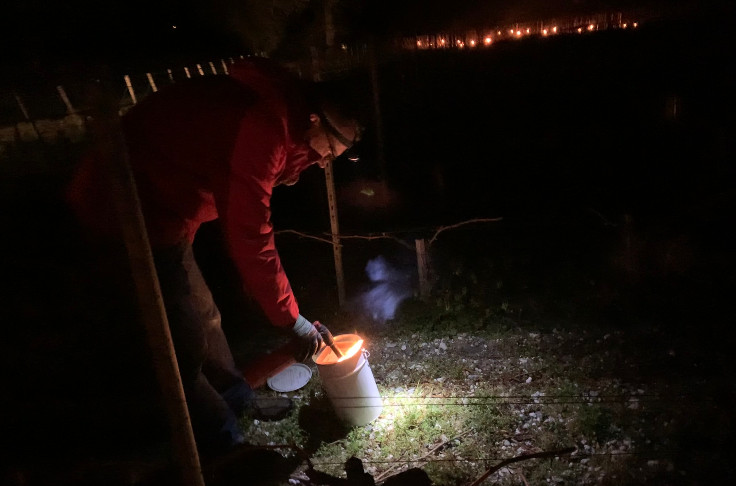Night time spring frosts “as usual” for French winegrowers

lear skies and below-zero temperatures at dawn got Pessac-LĂ©ognan winegrowers swinging into action on April 5 as they set out to combat radiation frost using a range of techniques from rows of candles to wind machines. At Château de France, thermal sensors warned of the first negative temperatures starting at 2am. At daybreak, the mercury could drop to -3°C to -4°C, points out Arnaud Thomassin, as he busies himself lighting paraffin candles as an emergency solution after one of his 7 wind machines broke down. His Merlot and Sauvignon blanc vines have already gone past the bud burst stage. “Late pruning is effective against frost at the end of March, but not in April”, he claims. Although he is used to growing vines in frost-prone areas, he is not accustomed to recurring episodes of frost: “There is frost every year, in 2021, 2022 and 2023. It is now the norm”, he adds.
SĂ©bastien Ravilly, technical director at Château Couhins-Lurton (AndrĂ© Lurton group), is not too concerned about temperatures compared with spring frost in the 2021 and 2022 vintages. He has seen sensor readings of -1°C at 5am in vineyards located in low-lying areas. To help the vines safely through bouts of frost, the estate is trialling stainless steel heaters fuelled with compressed peat briquettes on three blocks of Sauvignon blanc (2 hectares). As frost becomes a more regular occurrence, the winery is trying to find active means of combatting it without them being harmful to the neighbours due to its location on the edge of town. With the heaters, “we get less smoke and soot than candles. There is a little smoke when you start them but none afterwards. It’s just like charcoal on a barbecue”, comments Ravilly. The winery’s technical director has chosen to prune the vines long and leave them un-trimmed and has seen that the buds have already grown significantly, including the base, with acrotony having a less significant effect than in the past. Once the threat of frost has passed, the estate will prune and bend the canes so as not to tire the vines. Although Ravilly prefers late pruning, he says that “we need different solutions for each case. There is no silver bullet, every vineyard block is different”.






